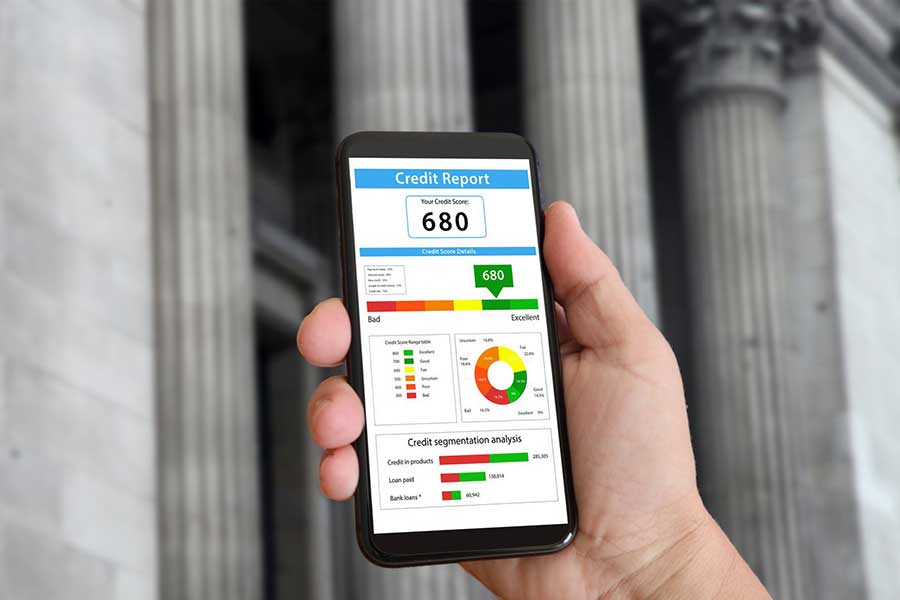Ever checked your credit score and wondered why you’re seeing two different numbers? You’re not alone. Most people have multiple credit scores because lenders use different scoring models—mainly FICO and VantageScore.

Both models aim to measure how likely you are to repay borrowed money, but they use different formulas and data weightings to do it. Knowing which one your lender uses can make a real difference when you’re applying for a loan, mortgage, or credit card.
In this guide, you’ll learn what sets FICO and VantageScore apart, how each one calculates your credit score, and which score matters most when it comes to loan approvals.
What Is a FICO Score?
The FICO score was created in 1989 by the Fair Isaac Corporation. It quickly became the standard for lenders, and today it’s used in over 90% of lending decisions in the United States.
FICO scores range from 300 to 850 and are based on information pulled from your credit reports with Experian, Equifax, and TransUnion. Lenders rely on these scores to predict how likely you are to make future payments on time.
There are several versions of the FICO Score currently in use:
- FICO 8: The most commonly used version across credit card and personal loan issuers.
- FICO 9: Adjusts how medical debt and paid collections are treated.
- FICO 10 and 10T: Introduce trended data, which looks at your behavior over time rather than a single moment.
Because not every lender updates their systems at the same pace, multiple FICO versions remain active in the market.
What Is a VantageScore?
VantageScore was launched in 2006 by the three major credit bureaus—Experian, Equifax, and TransUnion—as a direct competitor to FICO. It was designed to provide a consistent scoring model across all bureaus and make credit scoring more inclusive.
Like FICO, VantageScore also ranges from 300 to 850. However, its scoring formula allows it to generate a credit score with a shorter credit history—sometimes with as little as one month of credit data. This makes it more accessible for people who are new to credit or have thin credit files.
The most widely used versions are:
- VantageScore 3.0: Introduced the 300–850 range and ignores certain paid collections.
- VantageScore 4.0: Incorporates trended data, giving more weight to consistent payment patterns over time.
You’ll often see your VantageScore displayed on free credit score tools, fintech apps, and some credit card dashboards. While fewer lenders rely on it for underwriting, it’s valuable for tracking your progress and monitoring your overall credit health.
FICO vs. VantageScore: Key Differences at a Glance
FICO and VantageScore share the same 300–850 range, but they measure your credit behavior differently. FICO has been around longer and is used in most lending decisions, while VantageScore is newer and more common in credit monitoring tools.
Here’s a quick side-by-side comparison to see how they differ.
| Feature | FICO Score | VantageScore |
|---|---|---|
| Scoring Range | 300–850 | 300–850 |
| Founded | 1989 | 2006 |
| Developed By | Fair Isaac Corporation | Experian, Equifax, and TransUnion |
| Versions in Use | FICO 8, 9, 10, 10T | 3.0, 4.0 |
| Minimum Credit History Required | 6 months | 1 month |
| Weight of Payment History | 35% | Around 40% |
| Data Sources | Experian, Equifax, TransUnion | Experian, Equifax, TransUnion |
| Lender Usage | Used in most lending decisions | Common in consumer credit tools |
| Most Recent Update | FICO 10T | VantageScore 4.0 |
VantageScore is often more inclusive, allowing people with limited credit history to qualify for a score sooner. FICO, on the other hand, is deeply ingrained in the lending industry and remains the standard for mortgages, car loans, and credit cards.
How Each Model Weighs Your Credit Behavior
Both FICO and VantageScore assess similar data points, but the weight they give to each factor can lead to noticeable score differences. That’s why your FICO and VantageScore numbers rarely match exactly.
FICO Score Factors
FICO focuses heavily on consistent payment history and responsible credit use.
- Payment history: 35% of your FICO score is based on on-time payments.
- Amounts owed: 30% reflects how much of your available credit you’re using.
- Length of credit history: 15% looks at how long you’ve had credit accounts.
- Credit mix: 10% rewards having different types of accounts, like credit cards and loans.
- New credit: 10% considers how many recent credit inquiries or new accounts you have.
VantageScore Factors
VantageScore uses slightly different categories, ranking them by influence instead of strict percentages.
- Payment history: Extremely influential, the strongest factor in your score.
- Credit utilization: Highly influential and closely tied to your credit card balances.
- Age and mix of credit: Moderately influential, based on account types and longevity.
- New credit behavior: Less influential, focusing on recent credit activity.
- Available credit: Least influential, with a small effect on your overall score.
Factor Weight Comparison
| Category | FICO | VantageScore |
|---|---|---|
| Payment History | 35% | Extremely influential |
| Utilization | 30% | Highly influential |
| Credit Age | 15% | Moderately influential |
| Credit Mix | 10% | Moderately influential |
| New Credit | 10% | Less influential |
In short, both models reward the same positive habits: pay on time, keep balances low, and maintain healthy account longevity. The difference lies in how each system prioritizes those behaviors when calculating your credit score.
Which Credit Score Do Lenders Use
When you apply for a loan or credit card, lenders almost always check your FICO score. In fact, FICO is used in more than 90% of lending decisions across the country. Mortgage lenders, auto finance companies, and major banks all rely on FICO because it’s been the industry standard for decades.
VantageScore, while accurate and widely available, is used more for credit monitoring and educational purposes. You’ll see it on apps like Credit Karma or Credit Sesame, but most lenders don’t use it to make approval or rate decisions.
That said, VantageScore adoption has been slowly increasing among some personal loan providers and fintech lenders. Still, when it comes to major borrowing decisions, your FICO score remains the one that matters most.
If you’re planning to apply for credit, always check which scoring model your lender uses so you know which number to focus on.
Why Your FICO and VantageScore May Differ
It’s completely normal for your FICO and VantageScore numbers to be different. Each model uses its own formula and pulls data at slightly different times, which can lead to noticeable score gaps.
Here are a few common reasons your credit scores don’t match:
- Different scoring formulas: Each model weighs credit behaviors in its own way.
- Timing of updates: Credit bureaus report at different intervals, so one score may reflect newer data than another.
- Version mismatch: You might be comparing an older FICO version (like FICO 8) with the newer VantageScore 4.0.
- Treatment of collections: Paid collections and medical debts are handled differently depending on the model.
- Closed or inactive accounts: Some models stop including older or dormant accounts, while others keep them in the calculation.
The differences don’t mean one score is wrong—just that they’re using separate scoring systems to interpret your credit history.
How to Check Both Scores for Free
You can access both types of credit scores without paying a fee. Checking your credit scores this way never hurts your credit, since these are soft inquiries.
Here’s where to find each one:
- FICO Score: Available through Experian, Discover, Citi, and some other major credit card issuers.
- VantageScore: Found on Credit Karma, Credit Sesame, and NerdWallet.
Monitoring both credit scores can give you a more complete view of your overall credit health—especially if you’re preparing for a loan or major purchase.
Which Score Matters More for You
Both FICO and VantageScore are accurate reflections of your credit behavior, but each serves a different purpose depending on your financial goals.
For Loan Applications
If you’re applying for a mortgage, car loan, or credit card, focus on your FICO score. It’s the model lenders use to determine approval, credit limits, and interest rates.
For Credit Monitoring
If you want to track your progress or keep an eye on your credit over time, VantageScore is helpful. It’s updated frequently and easy to access through popular credit apps.
For Credit Building
When you’re improving your credit, both models respond to the same positive habits. Pay on time, lower your credit utilization, and avoid unnecessary hard inquiries.
As long as you’re practicing responsible credit behavior, both your FICO and VantageScore should rise over time.
How to Improve Both FICO and VantageScore
Improving your credit scores doesn’t require complicated strategies. The same financial habits that build strong credit apply to both FICO and VantageScore.
- Pay on time: Even one missed payment can drop your score significantly.
- Keep credit utilization low: Try to use less than 30% of your total available credit.
- Maintain older accounts: The longer your credit history, the better your scores tend to be.
- Limit new applications: Too many hard inquiries can signal financial risk to lenders.
- Mix of credit types: A blend of revolving credit (like credit cards) and installment loans (like auto loans) can help strengthen your credit profile.
Small improvements in these areas can lead to meaningful increases in both your FICO and VantageScore over time.
Bottom Line
FICO and VantageScore both measure how responsibly you handle credit, but they use different formulas and data weightings to get there.
FICO remains the gold standard for lenders and plays the biggest role in loan approvals and interest rates. VantageScore, while less common in lending, is a great tool for tracking your progress and staying informed about your credit health.
The best strategy is to monitor both. Doing so helps you understand how lenders view your creditworthiness and gives you a broader view of your financial standing. By focusing on solid credit habits—paying on time, keeping balances low, and maintaining consistent credit use—you’ll improve both scores over time.




